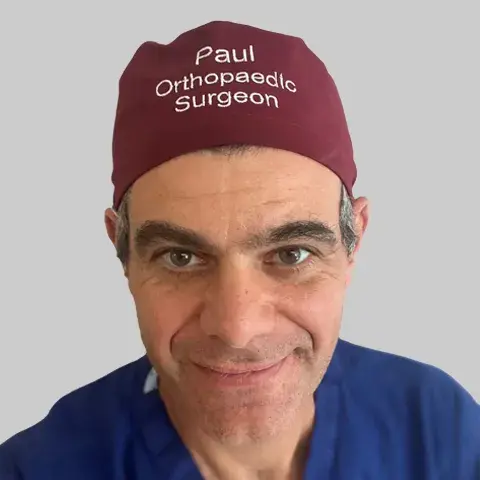Total Knee Replacement
The knee joint is the largest joint in the body. It is made up of the femur (thigh bone), tibia (shin bone) and the patella (knee cap). See xray below. Cartilage covers the ends of the bone to allow smooth movement, and this is lubricated by synovial fluid within the joint. Between the femur and the tibia sit two meniscii – which act as shock absorbers. The joint is reinforced by ligaments, which are fibrous strong tissue and surrounded by a fibrous joint capsule.
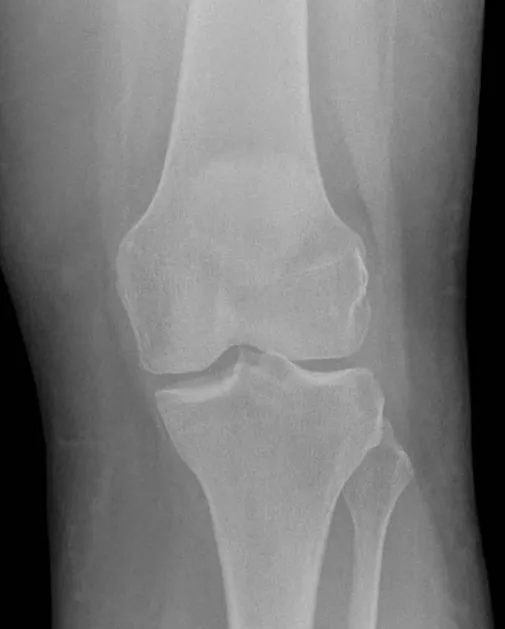 Normal Knee Xray
Normal Knee Xray
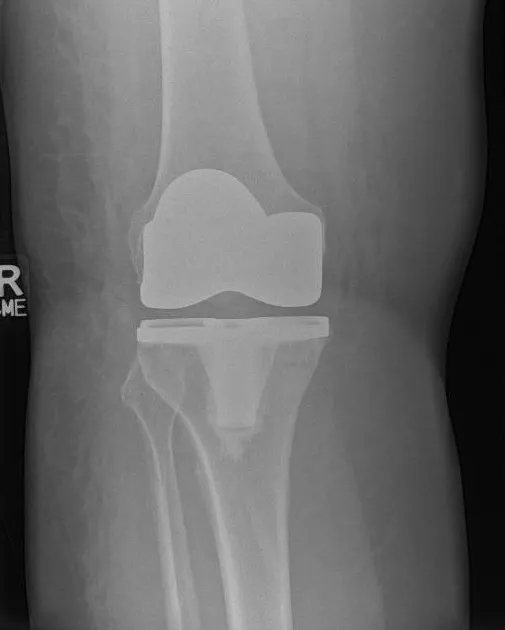 Total Knee Replacement Xray
Total Knee Replacement Xray
Osteoarthritis is the main type of arthritis. This was traditionally thought to be ‘wear and tear’ but we now know that it is more complex than that. Osteoarthritis causes multiple changes in the joint. It causes bony spurs (extra bone) to grow at the edges, it can change the shape of the bones, it can stiffen the capsule, as well as a loss of cartilage on the surface of the bones. This can result in generalised aching pain, sharp pains, stiffness in the joint and reduced range of motion. It can also sometimes result in a deformity to the knee i.e. it no longer sits in a straight line. Other type of arthritis include rheumatoid arthritis and post traumatic arthritis. With knee arthritis the common symptoms include walking with a limp due to pain or bony deformity, difficulty getting out of a chair and difficulty kneeling.
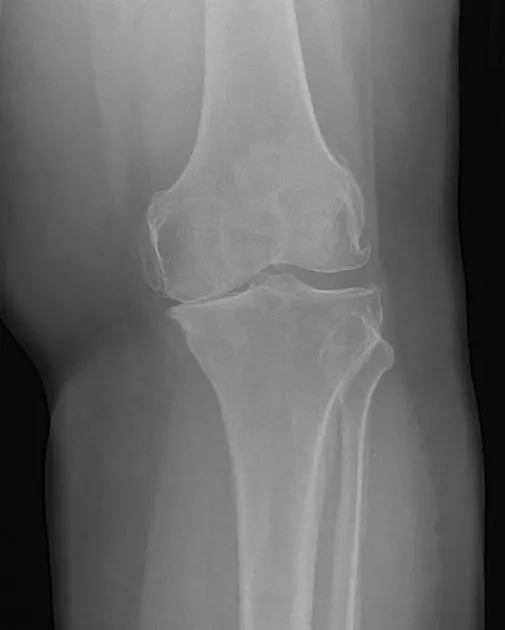 OA Knee Xray
OA Knee Xray
The indications for a knee replacement include:
- Severe pain that is not controlled by medication and is affecting your ability to sleep, work, or do your everyday activities
- Joint stiffness that limits your ability to move your leg or walk
It can be a difficult decision to decide whether to have a knee replacement or not. There are support tools hosted by the National Joint Registry and a Dorset version. Ultimately you may wish to discuss this with our knee surgeons, so please contact the team to arrange an appointment.
A knee replacement is a type of orthopaedic knee surgery where the damaged bone and cartilage surfaces of the femur and tibia are removed and replaced. The replacement prosthesis is made of a metal alloy with a plastic liner between the 2 surfaces with an artificial prosthesis made of metal and plastic. The surgeons use a special cement to secure the prosthesis to the bone. At PHUHD we use a personalised knee system to provide a more accurate fit to match your own anatomy. The main aims of the procedure are to improve pain and function.
There are 2 options for knee replacement surgery – a partial knee replacement or a total knee replacement. These are classed as major operations. Patients are usually able to go home between 1 and 3 days post-op, so this would require a stay on our private ward.
A partial knee replacement is only indicated with arthritis in one section of the knee. Usually it is the femur and tibia on the inside of the knee that are replaced. The orthopaedic surgeon would be able to indicate if this would appropriate for you. A partial knee replacement is a requires a smaller incision, and the expectations are that movement and function is slightly better than for a total knee replacement.
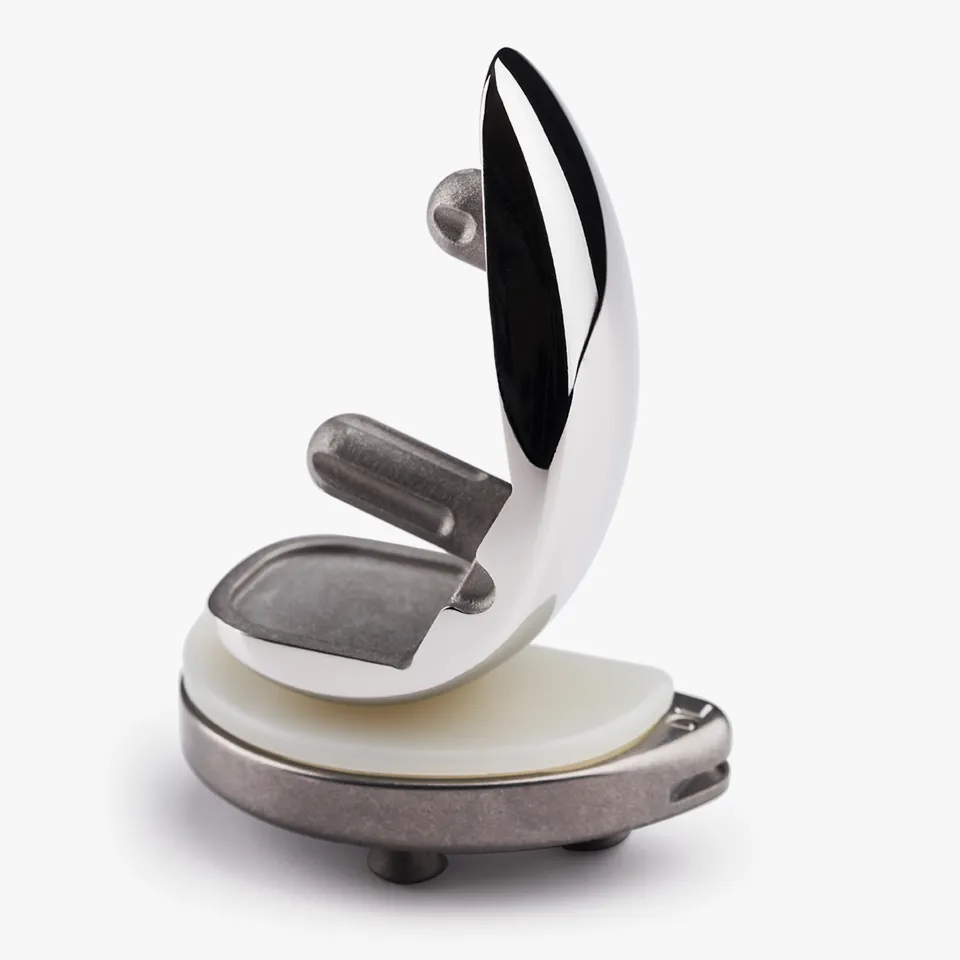 Permission granted by Zimmer Biomet
Permission granted by Zimmer Biomet
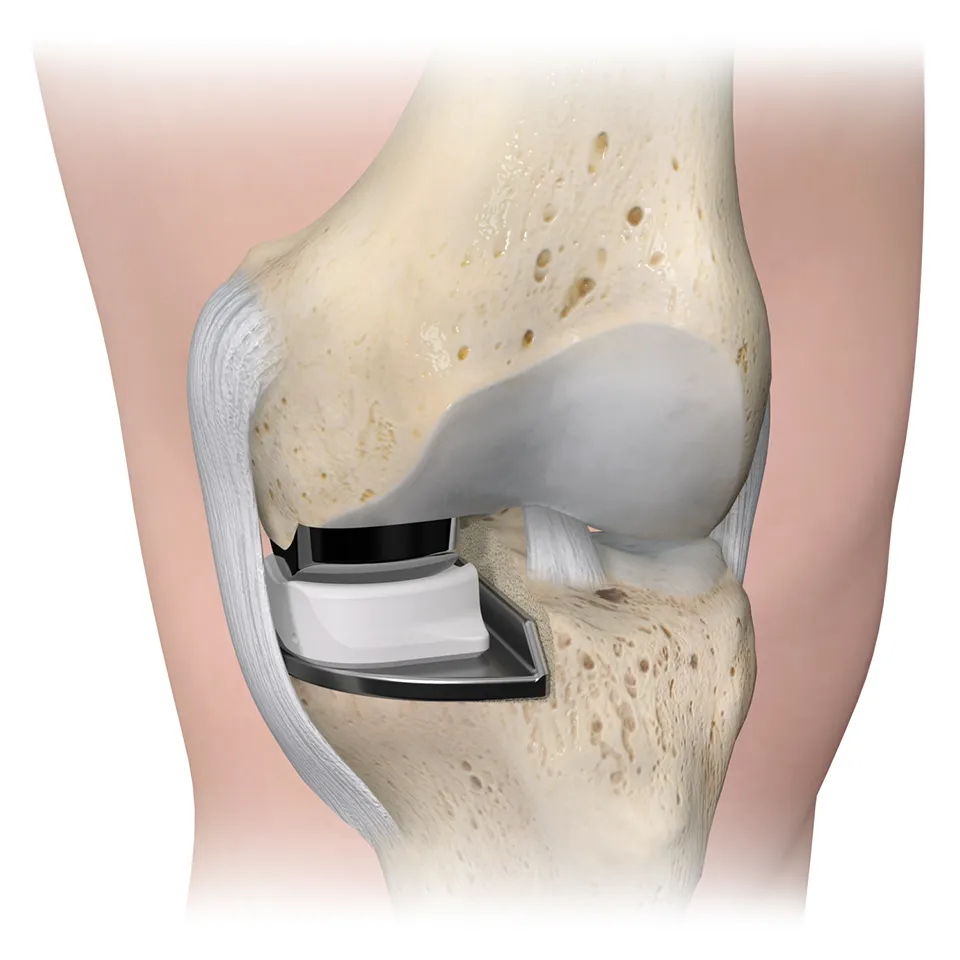
A total knee replacement is more appropriate in the presence of more widespread arthritis throughout the knee.
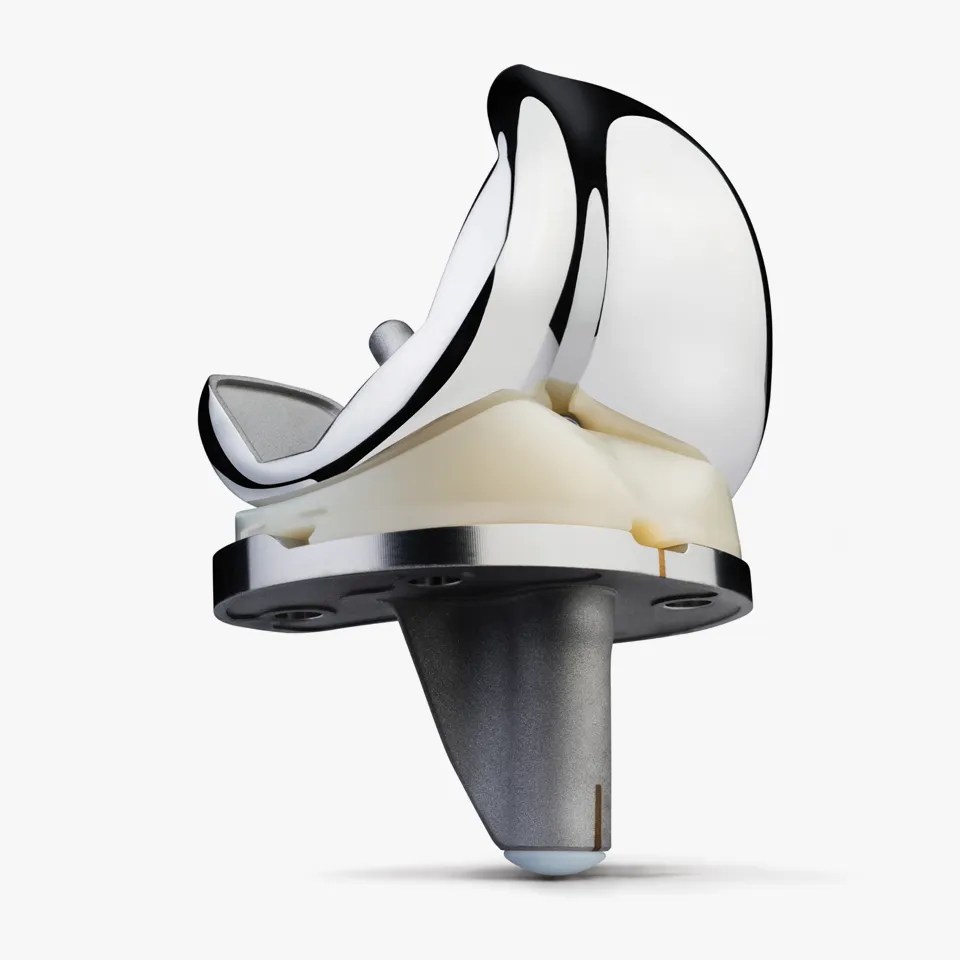 Permission granted by Zimmer Biomet
Permission granted by Zimmer Biomet
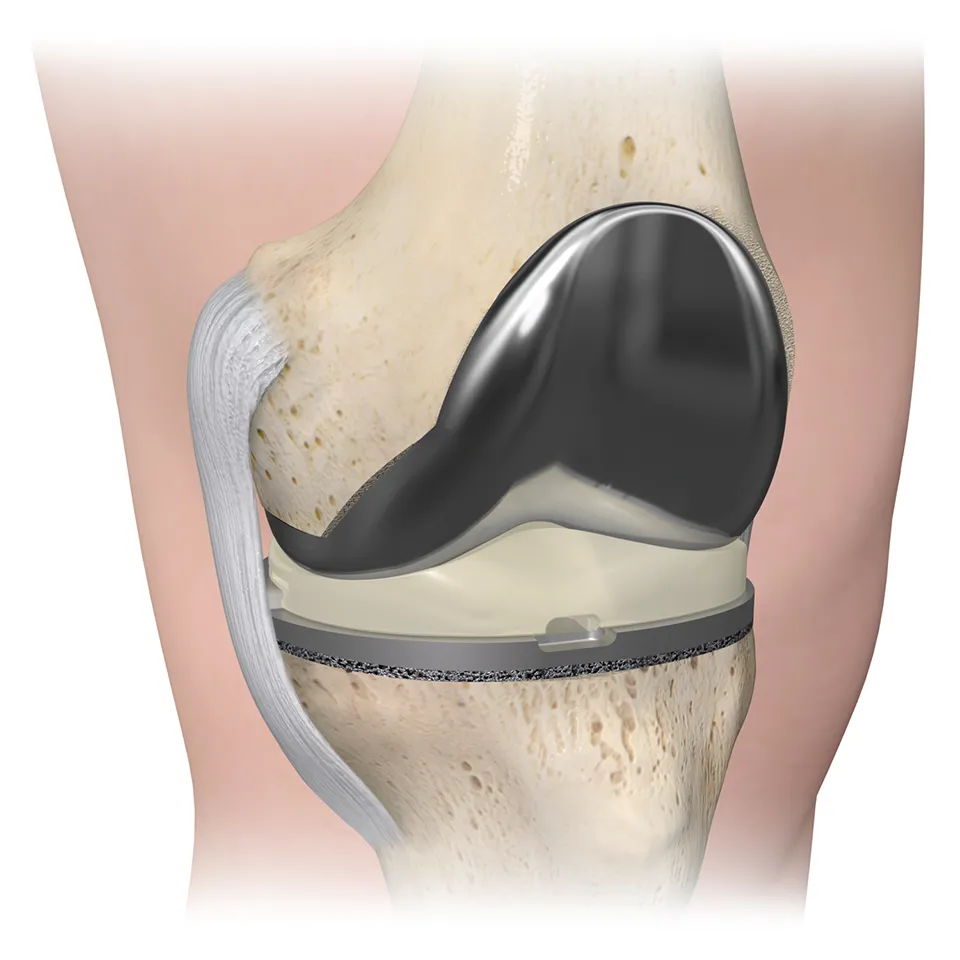
Recovery
This surgery usually requires a hospital stay of 1-3 days. We expect most people to be able to walk with crutches and complete a flight of stairs on discharge, but this depends on your level of mobility pre-operatively.
Recovery after a knee replacement can take a long time. Most people are doing well by 3 months, but improvement will continue up to 1 year after your replacement. An artificial knee is unlikely to function as a ‘normal’ knee and the activity level and movement post-operatively will vary and be dependent on pre-operative level.
A knee replacement is designed to last for approximately 15 years. For some people is does not last this long, but some people can retain a prosthesis for 25 years! If you need another knee replacement, this surgery would be called a revision. Revision surgeries are a bit more complicated as the surgery is longer, requires different and longer prostheses, and often the patients are older.
Physiotherapy information on post hip surgery classes.
Where?
Currently these operations take place at Bournemouth Hospital. In 2026, the elective orthopaedic service moves to Poole Hospital, and we therefore will be establishing a private ward on the Poole site.

